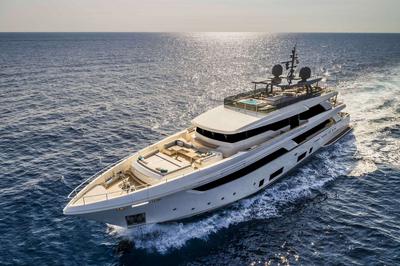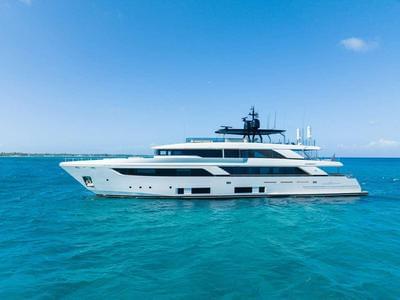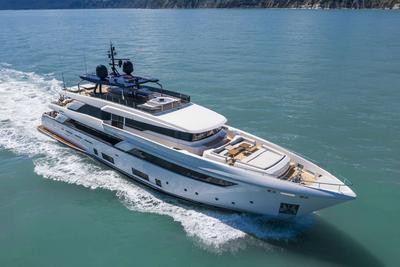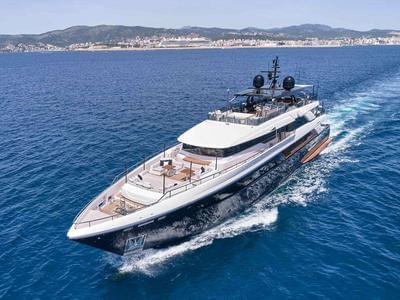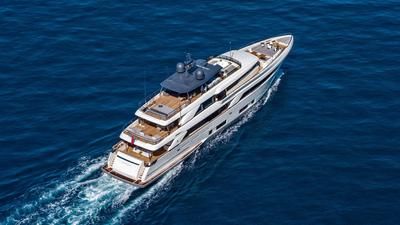

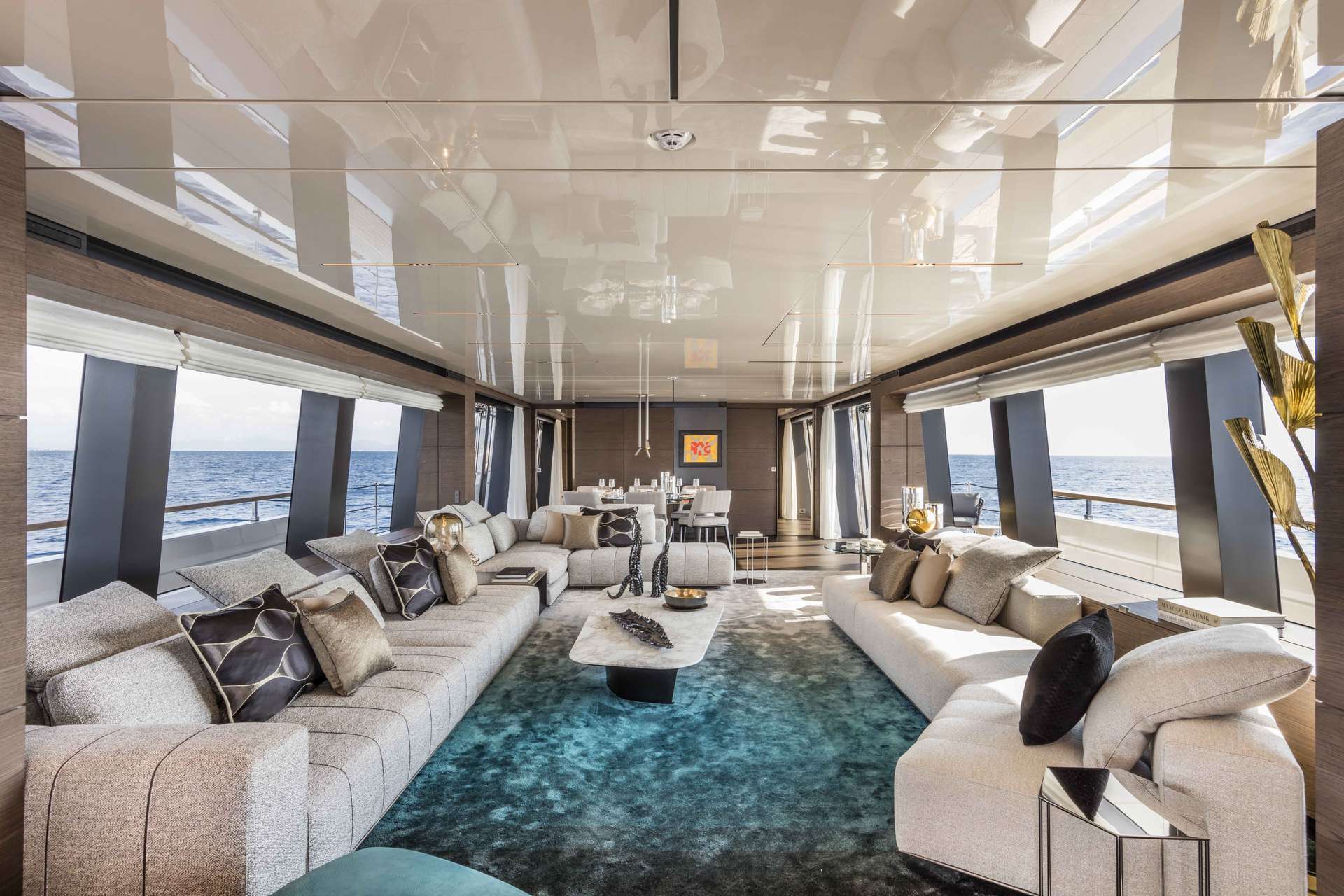
Ferretti Custom Line Navetta 42 is a series of Raised pilot house yacht 138ft/41.84m superyachts built in
in by Ferretti Custom Line.
15 Ferretti Custom Line Navetta 42 yachts were delivered so far,
with the first of these series,
motor yacht
10
in 2023
, followed by
2024 11
,
2025 14
,
2025 15
,
2021 8
,
2021 Alex 7
,
2022 Allure
,
2020 Asante
,
2019 CIAO 2
,
2024 Felicity 12
,
2018 Four Flowers III
,
2020 Horizon
,
2023 M Together 9
,
2024 Nimir 12
,
2020 Sangha.
Created to a design of Zuccon International Project, Navetta 42 has a Semi-displacement GRP hull and GRP superstructure driven by 2 x MTU 12V 2000 M72 engines to a maximum speed of 16.5 knots while comfortably cruising at 15.00 knots. The fuel tank has a capacity of 38000l/8352gal what allows a yacht to cover 3800 nautical miles without the need to refuel. Ferretti Custom Line Navetta 42 has a beam of 8.14m/27ft. The gross tonnage of this Raised pilot house yacht Ferretti Custom Line is 370 gross tons. That shows exactly how much interior space this yacht has.
Ferretti Custom Line Navetta 42 can accommodate up to 10-12 people in 5 elegant staterooms to be assisted by a total of 8 crew members with 4 cabins for crew members.
With a length of 41.8 metres (137’2’’ ft.) and a beam of 8.1 metres (26’7’’ ft.), Custom Line Navetta 42 features a semi-displacement hull with a bulbous bow that ensures maximum efficiency in any sea condition, reprising the solutions already adopted on its smaller precursors, the Navetta 33 and Navetta 37. Throughout its 4 spacious decks, the new flagship presents a fully-customisable internal layout conceived to exploit the ship's generous volumes to the fullest and to offer maximum liveability in all areas, with impressive lengths and heights above 2m in the interior spaces. The result is better organisation of on-board flows, total privacy for the owner and his guests, and great freedom of movement for the captain and crew.
Internally, Custom Line Navetta 42 blends exquisite chromatic harmonies with a selection of refined materials and surfaces. Walnut and dark oak are the dominant essences of the interiors, and combine seamlessly with the lacquered surfaces of the ceilings, the bronze-coloured brushed steel of the handles and handrails, and the mirror-finish steel used for the doors.
In perfect chromatic harmony with the dark woods, the main colour tones range from grey to beige, with teal details that recur in the sundeck’s unusual chairs, in the upper deck's carpets and cushions, and even in the formal dining table on the main deck.
Navetta Custom Line 42 is a striking example of that “family feeling” which made the brand famous worldwide: it welcomes guests into a modern and stylishly eclectic ambiance, enriched by a contemporary vibe that reverberates in the elegant yet functional furnishings, with their innovative and essential design.
Aside from the unquestionable elegance, the new Custom Line flagship also impresses for its engineering innovations. Navetta 42, for example, offers unrivalled noise isolation thanks to a special flexible joint in the transmission lines that absorbs vibrations from the axis line. The goal of minimising phonic impact was fully achieved through targeted mathematical analyses for each and every noise source and its location on board. Cutting-edge damping solutions were also employed, using glued panels that increase comfort by reducing noise and vibrations. Furthermore, just like on Navetta 37, the main deck is fitted with a state-of-the-art floating floor: a technique whereby the floor surface is separated from the fibreglass base by a layer of sound-absorbing materials, to reduce the transmission of noise and vibrations from the engine room to the living areas, while also softening any footfall.
Finally, as it exceeds 300 GT, the new Custom Line flagship must meet certain regulatory requirements such as those pertaining to stability in the event of a breach. Should the hull become damaged, Custom Line Navetta 42 features a system of automated waterproof doors that close upon specific commands by the captain, in order to isolate the forward compartment from the aft one, thus ensuring safe navigation.
